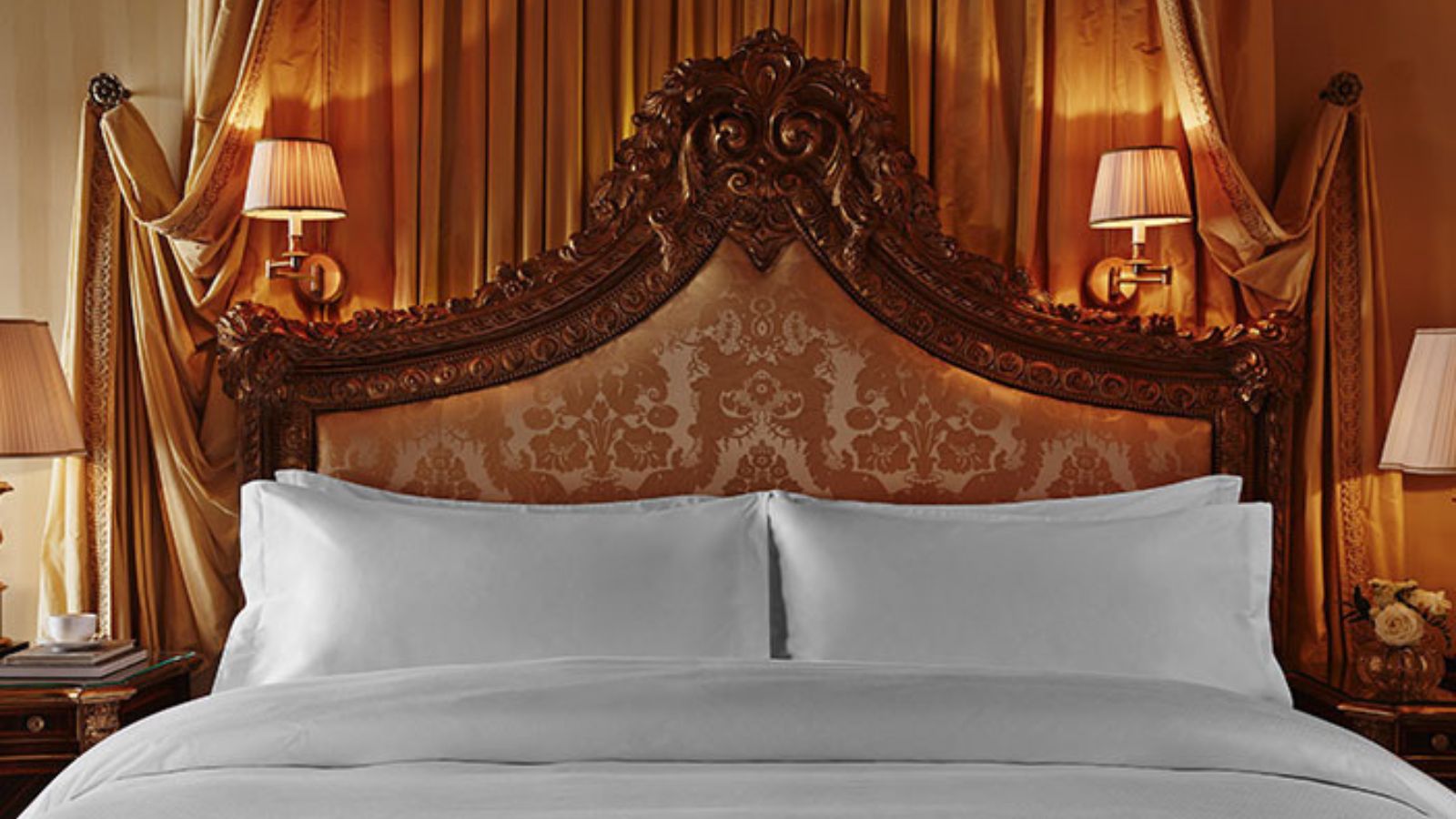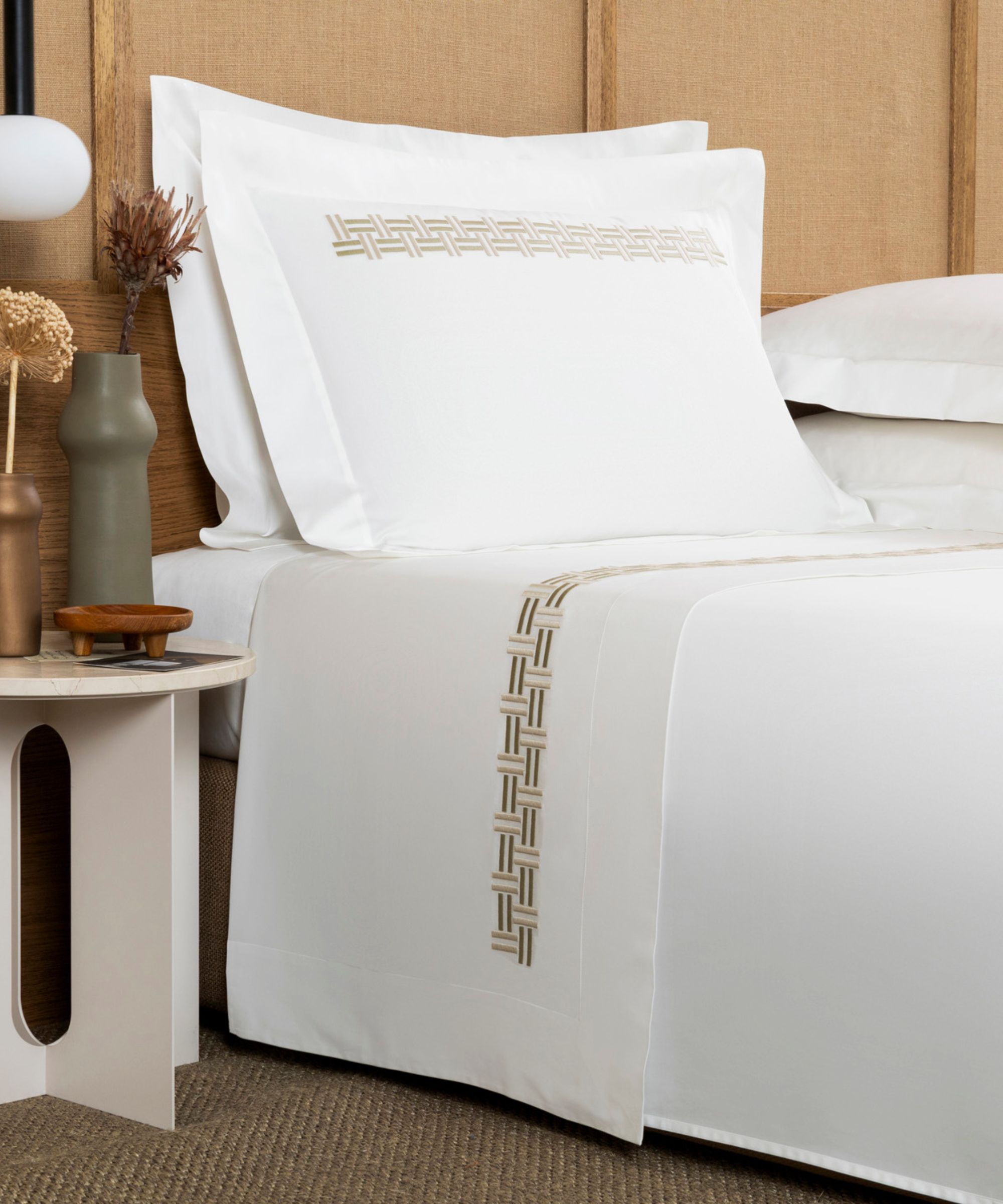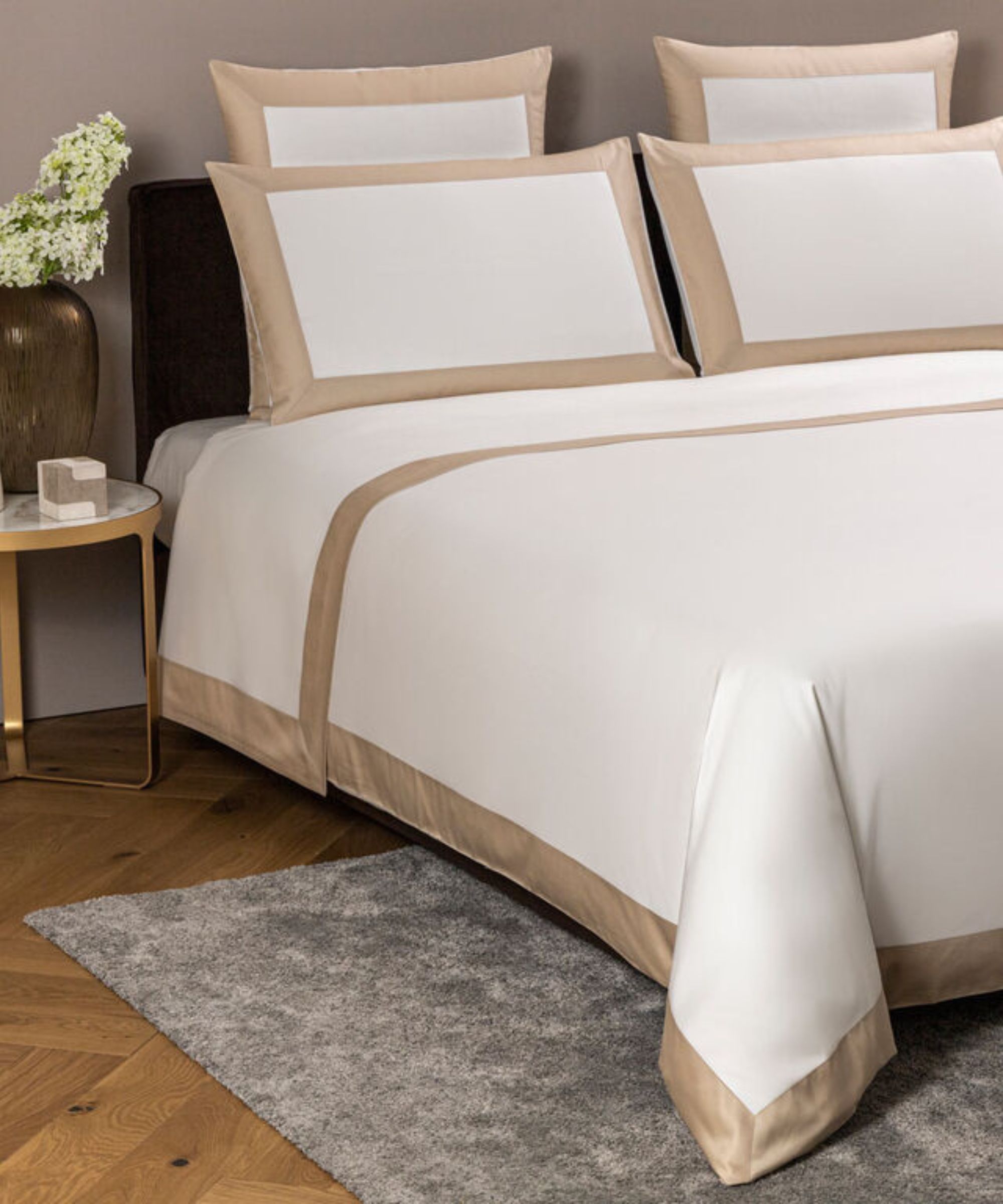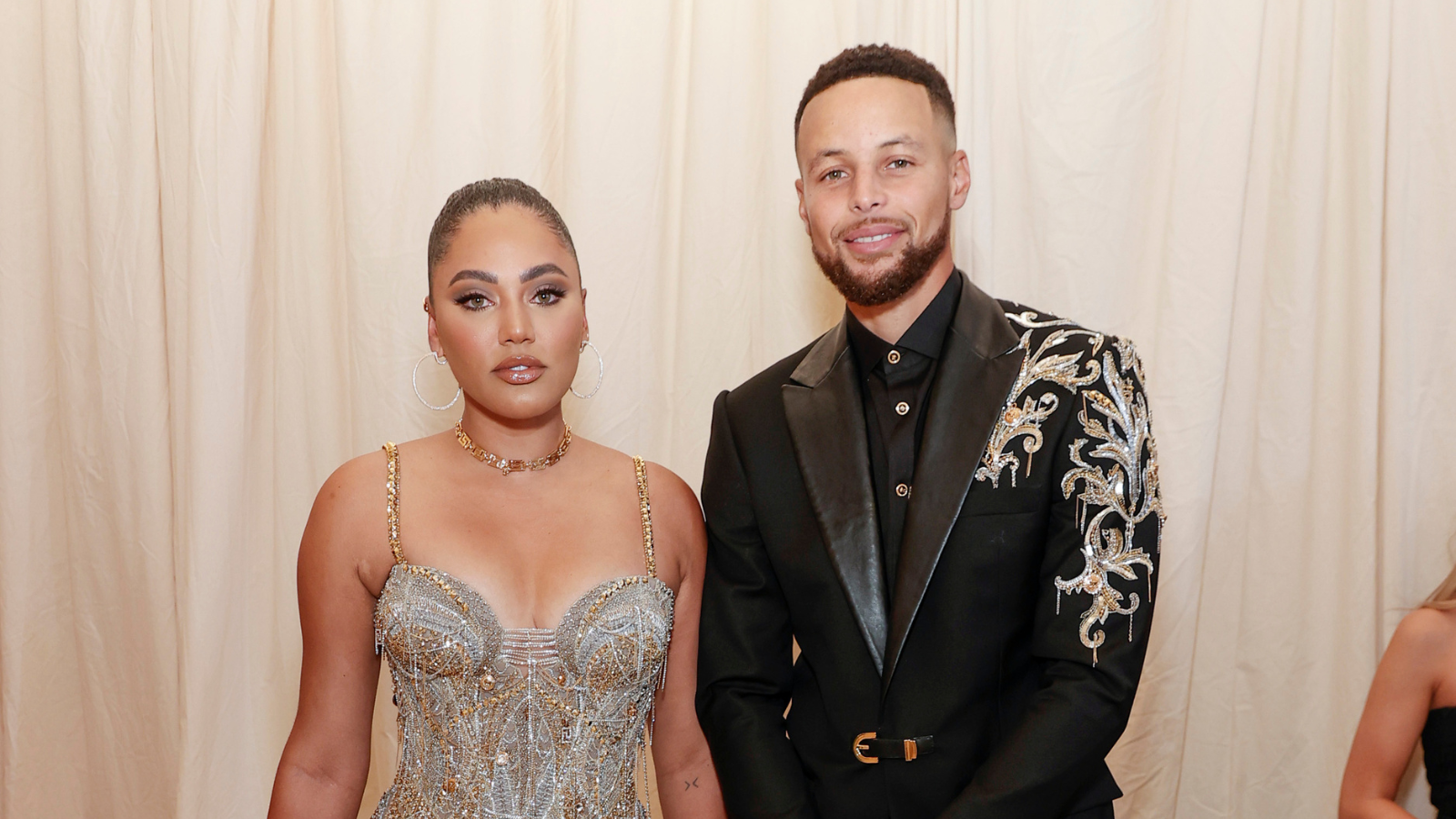How to make a bed the right way – expert advice from luxury bed dressers
From plumping pillows to smoothing sheets, it's easy to make a bed look a million dollars − with help from the stylists at Frette, the luxury bedding company


Ruth Doherty
As H&G's resident Sleep Editor, I'm often asked how to style a bed. After all, I've had a lot of practice. I spend my nights snuggling under the best bed sheets and cuddling up the best comforter. Each morning, I make my bed, remembering the expert advice I received from the bed dressers at Frette.
When I first specialized as a sleep writer, I was lucky enough to attend a bed-making masterclass hosted by Frette, makers of the best luxury bedding on the market. They taught me everything I know about making a bed to the highest standards, and I want to share their secrets with you.
How to make a bed − according to the experts
Before you begin, it's important to prepare your bed. Strip the sheets, throw them in the washing machine, and bring fresh bedding out of storage. Take a good look at your mattress: if you can see dust, dirt, and dander, then it's worth learning how to clean a mattress to make a fresh start. Cover your bed with the best mattress protector to guard against sweat, spills, and stains. If you're using the best mattress topper, then that goes on top of your mattress and beneath your mattress protector.
Start with sheets

1. Select your sheet set
I used to wonder how to choose the best bed sheets for my sleep style and bedroom aesthetic. The bed dressers at Frette taught me to focus on the three F's: fiber; finish; and feel.
'Fiber' concerns the material and the weave of the sheets. Particular bed sheet types bring a certain look and feel to your bed: linen is tough and textured, for example, whereas silk is soft and smooth. The most common fiber used at Frette is cotton sateen: long staples of cotton woven three-threads-over, one-thread-under to create a tight sheet with a glossy sheen. If you prefer your sheets to feel cool and crisp, you could consider cotton percale, instead.
'Finish' is all about durability: the strength and the softness of your sheets. You want something that can withstand frequent cycles in the washer and dryer without incurring wear and tear. Ideally, you're looking for bed sheets woven from long staples of natural fibers. 'Don't worry too much about the best thread count for bed sheets,' a Frette bed dresser told me. 'The length of the staples is far more important than the number. You could have a thread count of 1000, but if the staples are too short, your sheets will still pill.'
Finally, and most importantly, it's all about the 'feel' of the sheets against your skin. Like I said, some people like their sheets to have a little texture, whereas others like theirs soft and slippery.
2. Add the bottom sheet
A standard sheet set contains a flat sheet, a fitted sheet, and two pillowcases. Take your fitted sheet (the one with elasticated edges) and pull it over the corners of your mattress. Make sure to pull your fitted sheet all the way down, so the corners don't pop off in the middle of the night.
If you've only got flat sheets, don't worry: you can still create a tight-fitting bottom sheet if you know how to make hospital corners (this guide from Crane & Canopy can show you how).
3. Layer the top sheet
If you're adding a top sheet, now's the time to do it. Lay the flat sheet on the bed so that it lines up with the corners of the mattress. Remember, you want to lay your top sheet upside down, so that when you fold it over, any embroidery or edgework is right side up.
Tightly tuck your top sheet under the mattress and create hospital corners at the bottom. Hotels tend to tuck in the top sheet all the way round the mattress, but most of the bedmakers at Frette prefer to leave the sides loose to show off the edge detailing.
4. Pop on a duvet or comforter
Lay your duvet or comforter on top of the flat sheet. You might like to fold any excess sheeting back down over the comforter to create a more layered look.
When you're shopping for the best duvet, consider the aesthetic you're trying to create. Many of the bed dressers at Frette enjoy a dramatic drape over the sides of the bed: it makes your bedspread look bigger and more luxurious. In that case, you might like to size up: a Queen comforter for a Full mattress or a King comforter for a Queen mattress, and so on. If you prefer a sleeker silhouette, then I suggest you stick with the size of your mattress.
Place your pillows

The best bed needs the best pillow for neck support, plus one, two, or five of the best throw pillows to spruce up the bedspread. I spoke to a Frette bed dresser who recommends using throw pillows in accent colors to create a sense of depth and dimension.
When you're making your bed, be sure to plump your pillows first, especially if they're filled with feathers or down. Goose down, in particular, needs a lot of air to keep the clusters fluffy. It's worth it, though: a quick plump creates natural loft.
I used to struggle to put pillows into their cases. Then, the bed dressers at Frette taught me to karate chop the pillow in the middle so that the corners point automatically into place. This is a bit harder with down alternative, which has less give than down, but it's still a valuable time-saving trick. Now that you've filled your fresh pillowcases, it's time to style your pillows. Here are some ideas to get you started.
1. Put pillows on the bottom sheet
Place your pillows directly on top of the bottom sheet, leaning back against the headboard. Just in front of your pillows, fold back the duvet to make a more inviting bedspread.
2. Lay pillows on the comforter
Fold your comforter back so that it's flush against the headboard and pop your pillows on top. I often find this is the neatest way to make a bed and keeps all the heat inside, so there aren't any cold patches.
3. Introduce decorative pillows
Lumbar pillows are a good option for bedroom styling. You could add one on either side of your sleeping pillows or prop up one long lumbar pillow against the headboard.
How many throw pillows you choose is totally up to you, but I suggest you keep it simple: one or two decorative shams, plus a lumbar pillow in a contrasting color or texture. That way, you're making a style statement, but you don't have to pick off a pile of pillows every night.
Finish with a throw

'Throws are primarily decorative pieces,' acknowledges the Frette bed dresser, 'but a blanket can cover creases in your top sheet and comforter to make a neat bedspread.' I like to layer a blanket over the end of my bed to create a finished look.
1. Drape a blanket over the end of the bed
'Drape' is the key word here. A stylish blanket adds more depth to your bedspread. Swapping out a thicker throw for a lighter layer is the sort of easy seasonal switch you can make throughout the year.
2. Tuck in a quilted blanket
For a hotel-quality finish, tuck a quilted blanket under the mattress and around the duvet. You could also choose to let it hang loose for a more casual, lived-in look.
3. Bring the blanket up to the pillows
If you're a cold sleeper, or you live in a colder climate, you could bring your blanket right up to the pillows to create an extra layer of cozy comfort.
FAQs
What is a top sheet and do I need one?
A top sheet is a large flat sheet. Where a bottom sheet, or fitted sheet, has elasticated edges, a top sheet has none. It's designed to go between your body and your comforter to absorb any dirt and oils, keeping your comforter cleaner for longer.
I recommend a top sheet in place of a comforter for hot sleepers and summer nights. In winter weather, a top sheet can double as an extra layer to help you keep warm in bed. Most top sheets feature decorative edgework to break up the blank canvas of white bedding.
A top sheet is totally optional: you could easily make your bed without one. Some people find that their top sheet moves around in the night, creating cold patches and making it harder to keep a neat bespread.
How often should I clean my sheets?
You should wash your bed sheets every week, or every two weeks, at least, depending on whether you run hot or cold and how warm it is in your bedroom. That way, you should keep your bed and your body clean of dead skin cells, which can attract dust mites and bed bugs. Failing to wash your sheets is one of the biggest bed-making mistakes you can make.
You don't have to make your bed first thing in the morning: in fact, it's more hygienic to peel back your sheets, open your bedroom window, and let your bedding air for a few minutes before you get to work. A little bit of fresh air should cool your bedding, wicking away moisture and making a less hospitable environment for bed bugs and dust mites.
Sign up to the Homes & Gardens newsletter
Design expertise in your inbox – from inspiring decorating ideas and beautiful celebrity homes to practical gardening advice and shopping round-ups.

Emilia is our resident sleep writer. She spends her days tracking down the lowest prices on the best mattresses and bedding and spends her nights testing them out from the comfort of her own home. Emilia leads a team of testers across America to find the best mattress for every sleep style, body type, and budget.
Emilia's quest to learn how to sleep better takes her all around the world, from the 3Z mattress factory in Glendale, Arizona to the Hästens headquarters in Köping, Sweden. She's interviewed luxury bedding designers at Shleep and Pure Parima, as well as the Design Manager at IKEA. Before she joined Homes & Gardens, Emilia studied English at the University of Oxford.
- Ruth DohertyContributing Editor
-
 I was looking for a way to bring the quiet luxury aesthetic into 2026 – Stephen and Ayesha Curry's kitchen backsplash is the solution
I was looking for a way to bring the quiet luxury aesthetic into 2026 – Stephen and Ayesha Curry's kitchen backsplash is the solutionQuiet luxury shows no signs of wavering, but how will it evolve? The basketball player's backsplash is the perfect way to introduce it to your kitchen
-
 5 seasonal items you should always clean before storing – cleaning experts reveal it's crucial for preventing mold, musty odors, and pests
5 seasonal items you should always clean before storing – cleaning experts reveal it's crucial for preventing mold, musty odors, and pestsIt’s a must to keep them safe, experts warn
-
 7 dorm room organizing rules for less clutter and more space
7 dorm room organizing rules for less clutter and more spaceExperts offer their top tips for creating a well-organized dorm room, no matter the size, space, or layout.
-
 How to maximize storage in a small or shared dorm room, according to pro organizers
How to maximize storage in a small or shared dorm room, according to pro organizersFind out all the hidden storage zones you might never have noticed